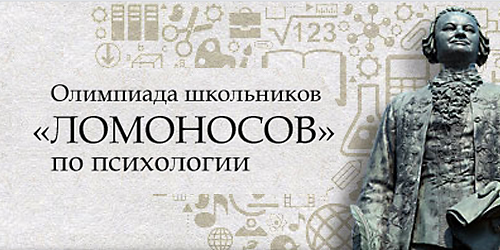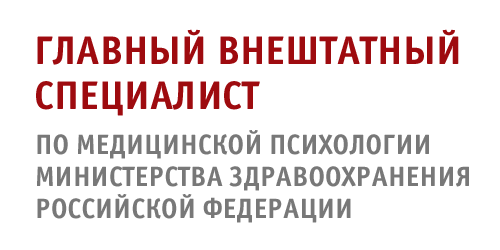Месть: современный взгляд на историческую проблему
Аннотация
Актуальность. Феномен мести активно изучается в психологии с начала XX в. Акты мести рассматриваются с точки зрения психоанализа, социальной, семейной, криминальной, юридической и других областей психологии. В современном мире поведение, основанное на мотиве мести, встречается в виртуальной среде. К мести как разновидности агрессивного поведения имеется двойственное отношение со стороны общества. С одной стороны, человек, который не мстит, может восприниматься как слабый. С другой стороны, многие воспринимают месть как неконструктивный способ поведения. Несмотря на распространенность мести, на настоящий момент в психологической науке нет общепринятого мнения относительно определения мести.
Цель. Анализ различных представлений о мести и выделение компонентов мстительного поведения, на основе которых одна из форм ответной агрессии может быть классифицирована как месть. В связи с этим затрагивается проблема разграничения понятий «месть», «возмездие», «ресентимент» и «наказание».
Результаты. Месть имеет существенное отличие от других форм агрессивного поведения — месть есть всегда реакция на предшествующую агрессию. Мотивационный компонент включает два аспекта: желание отомстить обидчику и стремление сохранить комфортный для человека уровень самооценки. Общество имеет двойственную функцию по отношению к мести: как исходный побудительный момент, влияющий на выбор ответной реакции на обиду, и как сдерживающий фактор. Готовность прощать определяют изменения в мотивационной сфере человека, нравственное и моральное воспитание и ряд личностных характеристик.
Выводы. В психологической науке феномен мести подвергается тщательному теоретическому анализу. В связи с тем, что месть является внутриличностным феноменом, разработка методического инструментария, в том числе психодиагностических методик, необходима для развития исследований мести.
Литература
Абеляр, П. (2010). Теологические трактаты. Москва: Канон+.
Апресян, Р.Г. (2001). Талион и золотое правило (Критический анализ сопряженных контекстов). Вопросы философии, (3), 72–84.
Арбатов, А.Г., Дворкин, В.З. (2005). Ядерное сдерживание и нераспространение. Москва: Московский центр Карнеги.
Аристотель. (2005). Риторика. Москва: Лабиринт.
Бэрон, Р., Ричардсон, Д. (1999). Агрессия. Санкт-Петербург: Питер.
Вестермарк, Э. (2009). Сущность мести. Социологический ежегодник, (4), 226–248.
Гусейнов, А.А., Апресян, Р.Г. (2000). Этика: Учебник. Москва: Гардарики.
Ениколопов, С.Н. (2006). Терроризм и агрессивное поведение. Национальный психологический журнал, 1(1), 28–32.
Ницше, Ф.К. (2012). Генеалогии морали. Ницше Ф. Полн. собр. соч.: в 13 т. Т. 5. Москва: Культурная революция.
Пилецкий, С.Г. (2010). Месть и возмездие: социальная эволюция с обратной связью Среднерусский вестник общественных наук, (2), 29–37.
Рюмшина, Л.И., Телеснина, О.Б. (2020). Месть как социально-психологический феномен. Психология. Историко-критические обзоры и современные исследования, 9(5а), 194–202.
Уголовный кодекс Российской Федерации от 13.06.1996 N 63-ФЗ (ред. от 21.11.2022). КонсультантПлюс. URL: https://www.consultant.ru/document/cons_doc_LAW_10699/ (дата обращения: 03.09.2023).
Фрейд, З. (1999). Введение в психоанализ. Лекции 1–15. Санкт-Петербург: Алетейя.
Фромм, Э. (1994). Анатомия человеческой деструктивности. Москва: Республика.
Шелер, М. (1999). Ресентимент в структуре моралей. Санкт-Петербург: Наука, Университет.
Ashton, M.C., Paunonen, S.V., Helmes, E., Jackson, D.N. (1998). Kin altruism, reciprocal altruism, and the Big Five personality factors. Evolution and Human Behavior, 19(4), 243–255.
Ayers, E.L. (1984). Vengeance and justice: Crime and punishment in the 19th century American South. New York: Oxford Univ. Press
Barber, L., Maltby, J., Macaskill, A. (2005). Angry memories and thoughts of revenge: The relationship between forgiveness and anger rumination. Personality and Individual Differences, 39(2), 253–262.
Becker, J. (1977). Hitler’s Children: The Story of the Baader–Meinhoff Gang. Philadelphia: J.B. Lippincott Company.
Berkowitz, M.W., Mueller, C.W., Schnell, S.V., Padberg, M.T. (1986). Moral reasoning and judgments of aggression. Journal of Personality and Social Psychology, 51(4), 885–891.
Bone, J.E., Raihani, N.J. (2015). Human punishment is motivated by both a desire for revenge and a desire for equality. Evolution and Human Behavior, 36(4), 323–330.
Brown, R.P. (2004). Vengeance is mine: Narcissism, vengeance, and the tendency to forgive. Journal of Research in Personality, 38(6), 576–584. https://doi.org/10.1016/j.jrp.2003.10.003
Carlsmith, K.M., Wilson, T.D., Gilbert, D.T. (2008). The paradoxical consequences of revenge. Journal of Personality and Social Psychology, (95), 1316–1324.
Castelnuovo-Tedesco, P. (1974). Stealing, revenge and the Monte Cristo complex. The International Journal of Psycho-Analysis, (55), 169–177.
Cota‐McKinley, A.L., Woody, W.D., Bell, P.A. (2001). Vengeance: Effects of gender, age, and religious background. Aggressive Behavior: Official Journal of the International Society for Research on Aggression, 27(5), 343–350.
Criminal Code of the Russian Federation dated June 13, 1996 N 63-FZ (as amended on November 21, 2022). Consultant Plus. URL: https://www.consultant.ru/document/cons_doc_LAW_10699/ (access date: 03.09.2023).
Dollard, J., Doob, L., Miller, N., Mowrer, O.H., Sears, R.R. (1939). Frustration & Aggressnion. New Haven: Yale Univ. Press.
Elster, J. (1990). Norms of revenge. Ethics, 100(4), 862–885.
Emmons, R.A. (2000). Personality and forgiveness. In: M.E. McCullough, K.I.
Pargament, C.E. Thoresen (Eds.), Forgiveness: Theory, research, and practice (pp. 156–175). New York: The Guilford Press.
Enright, R.D., Coyle, C.T. (1998). Researching the process model of forgiveness within psychological interventions. Dimensions of forgiveness: Psychological research and theological perspectives, (1), 139–161.
Fischer, P., Haslam, S.A., Smith, L. (2010). “If you wrong us, shall we not revenge?” Social identity salience moderates support for retaliation in response to collective threat. Group Dynamics: Theory, Research, and Practice, 14(2), 143–150.
Frijda, N.H. (1988). The laws of emotion. American Psychologist, 43(5), 349–358. https://doi.org/10.1037/0003-066X.43.5.349F
Frijda, N.H. (1994). The lex talionis: On vengeance. In: S.H. M. van Goozen, N.E. van de Poll, J.A. Sergeant (Eds.), Emotions: Essays on emotion theory (pp. 263–289). Mahwah: Lawrence Erlbaum Associates.
Geen, R.G., Stonner, D. (1973). Context effects in observed violence. Journal of Personality and Social Psychology, 25(1), 145–150.
Goldberg, J.G. (2004). Fantasies of revenge and the stabilization of the ego: Acts of revenge and the ascension of Thanatos. Modern Psychoanalysis, 29(1), 3–21.
Gordon, L. (1955). Incest as revenge against the pre-oedipal mother. The Psychoanalytic Review (1913-1957), (42), 284–292.
Gower, M. (2013). Revenge: interplay of creative and destructive forces. Clinical Social Work Journal, 41(1), 112–118.
Grobbink, L.H., Derksen, J.J., van Marle, H.J. (2015). Revenge: An analysis of its psychological underpinnings. International journal of offender therapy and comparative criminology, 59(8), 892–907.
Halleck, S.L. (1980). Vengeance and victimization. Victimology, 5(2), 99–109.
Howard, R., Duggan, C. (2021). 20 Personality Disorder and Offending. Forensic Psychology, (3), 468–484.
Kirman, W.J. (1989). Revenge and accommodation in the family. Modern Psychoanalysis, 14(1), 89–95.
Knutson, J.N. (1981). Social and Psychodynamic Pressures Toward a Negative Identity: The Case of an American Revolutionary Terrorist, in Alexander and Gleason. New York: Pergamon.
König, A., Gollwitzer, M., Steffgen, G. (2010). Cyberbullying as an act of revenge? Journal of Psychologists and Counsellors in Schools, 20(2), 210–224.
Lane, R.C. (1995). The revenge motive: A developmental perspective on the life cycle and the treatment process. Psychoanalytic review, 82(1), 41–64.
Marongiu, P., Newman, G.R. (1987). Vengeance: The fight against injustice. Totowa: Rowman & Littlefield.
McCullough, M.E., Bellah, C.G., Kilpatrick, S.D., Johnson, J.L. (2001). Vengefulness: Relationships with forgiveness, rumination, well-being, and the Big Five. Personality and social psychology bulletin, 27(5), 601–610.
McCullough, M.E., Hoyt, W.T. (1999). Recovering the person from interpersonal forgiving. In annual meeting of the American Psychological Association, Boston, MA. New York: Oxford Univ. Press.
McCullough, M.E., Kurzban, R., Tabak, B.A. (2013). Cognitive systems for re venge and forgiveness. Behavioral and Brain Sciences, 36(1), 1–15.
McCullough, M.E., Rachel, C., Sandage, S.J., Brown, S.W., Worthington, E.L., Hight, T.L. (1998). Interpersonal forgiving in close relationships: II. Theoretical elaboration and measurement. Journal of personality and social psychology, 75(6), 1586–1603.
Miller, N.E. (1941). I. The frustration-aggression hypothesis. Psychological review, 48(4), 337–342.
Rasmussen, K. (2016). Entitled vengeance: A meta-analysis relating narcissism to provoked aggression. Aggressive Behavior, 42(4), 362–379. https://doi.org/10.1002/ab.21632
Schumann, K., Ross, M. (2010). The benefits, costs, and paradox of revenge. Social and Personality Psychology Compass, 4(12), 1193–1205.
Stuckless, N., Goranson, R. (1992). The vengeance scale: Development of a measure of attitudes toward revenge. Journal of social behavior and personality, 7(1), 25–42.
Yeager, D.S., Trzesniewski, K.H., Tirri, K., Nokelainen, P., Dweck, C.S. (2011). Adolescents’ implicit theories predict desire for vengeance after peer conflicts: correlational and experimental evidence. Developmental psychology, 47(4), 1090–1107.
Zillmann, D. (1983). Arousal and aggression. Aggression: Theoretical and empirical reviews, (1), 75–102.
Поступила: 03.10.2023
Принята к публикации: 21.03.2024
Дата публикации в журнале: 28.06.2024
Ключевые слова: месть; возмездие; желание мести; ресентимент; прощение
DOI: 10.11621/LPJ-24-13
Доступно в on-line версии с: 28.06.2024
Колыванова, Э.В., Ениколопов, С.Н. (2024). Месть: современный взгляд на историческую проблему. Вестник Московского университета. Серия 14. Психология, 47(2), 11-30. https://doi.org/10.11621/LPJ-24-13
скопировано

Это произведение доступно по лицензии Creative Commons «Attribution-NonCommercial» («Атрибуция-Некоммерчески») 4.0 Всемирная
















